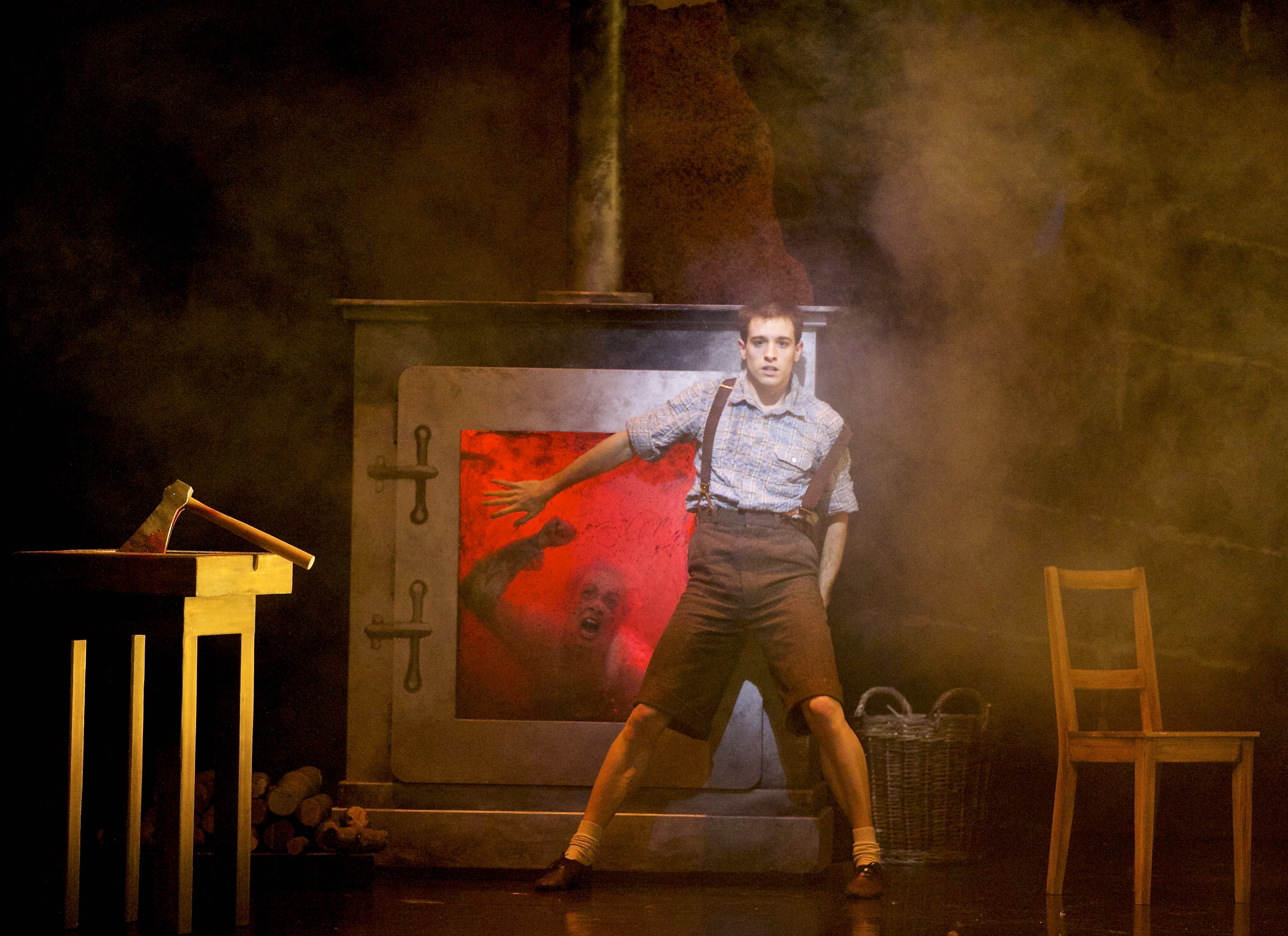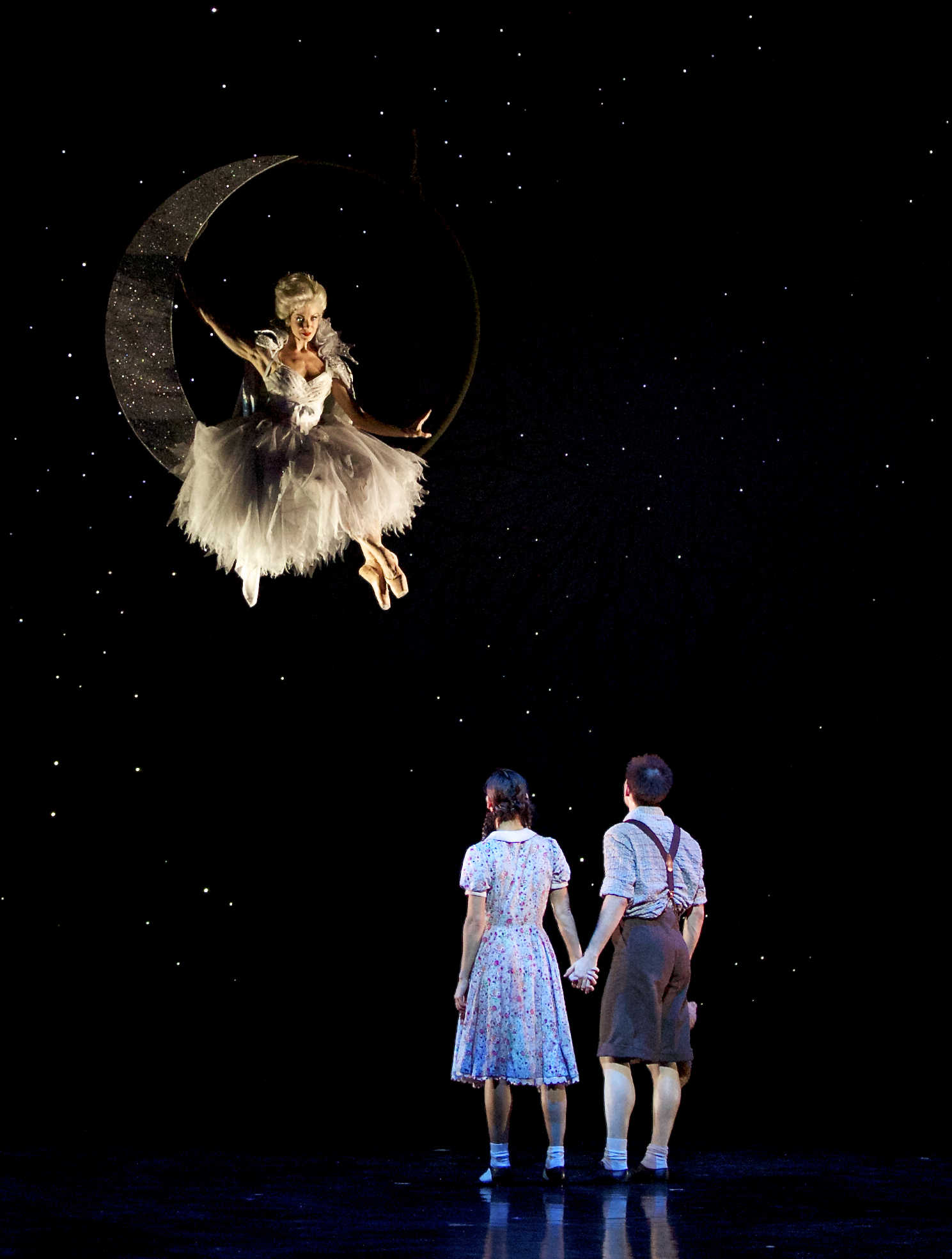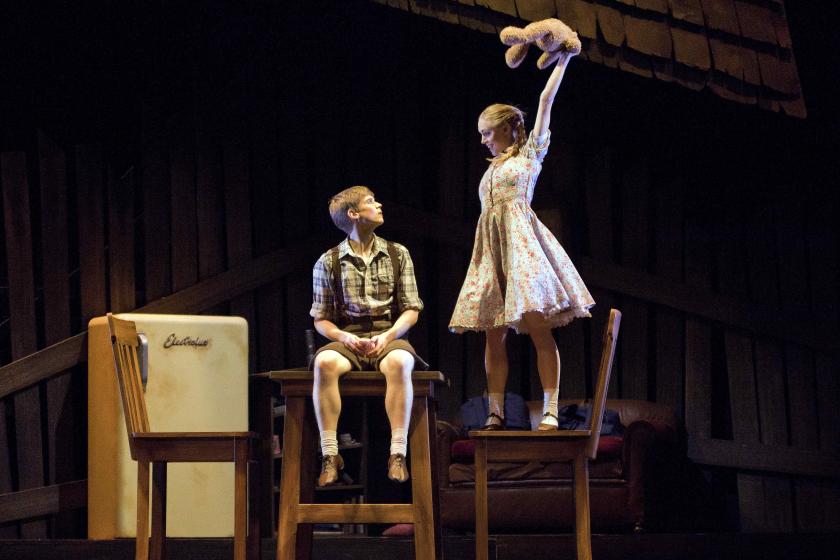When he became Artistic Director of Scottish Ballet in 2002, Ashley Page’s first creation for the company was a witty, pacy, Nutcracker, the kind of box-office friendly production all companies need to win the hearts of the public and stabilise the finances. The present bad blood between the company board and Page (whose contract was not renewed in 2012 despite a very happy and successful decade at the helm) has now led to the icing of his Nutcracker: Christmas 2014 will instead see a revival of the old 1990s Peter Darrell production. But the legacy of the Page years cannot be erased as easily as that, and new director Christopher Hampson has – consciously or unconsciously – imitated his predecessor in choosing for his first production a beautifully designed, family-friendly retelling of a beloved fairytale, in this case Hansel and Gretel.
Aiming squarely at the family market, Hampson - following Engelbert Humperdinck, from whose 1893 opera much of the ballet’s music derives - removes what is perhaps the scariest element in the Grimms’ original tale, the deliberate abandonment of the two children by their parents; instead, his Hansel (Jamiel Laurence) and Gretel (Constance Devernay) have a happy home life in a slightly jollified version of 1950s small-town Scotland, skilfully evoked by Caro Harkness’s costumes. All the evil they encounter is in the outside world, where the town’s children are disappearing and a glamorous schoolteacher (the gorgeously enticing Sophie Martin) is handing out lollipops.
Curiosity, rather than hunger or fear, leads Hansel and Gretel to leave home (where Quenby Hersh’s floral-apronned Mother and Remi Andreoni’s beer-swilling Father are contentedly snoozing on the sofa), but once outside they are menaced by the Ravens, three leather-jacketed rockers who later glam up with black feathers, and lured into the forest. The Ravens eat the crumbs Hansel drops to try and mark the way home, and when the exhausted children fall asleep (at the behest of a Sandman, Erik Cavallari), they dream of their parents at a ball, then of a banquet with chefs and waiters aplenty (finally! Something for the corps de ballet to do!). After being woken by a Dewdrop Fairy (Laura Joffre), they end up in a gingerbread house where – surprise! - the glamorous schoolteacher turns out to be a wicked witch and...well, you know the rest.
 Despite a couple of chilling moments, mostly courtesy of Gary Harris’s designs (the bloody axe stuck in a butcher’s block is a highlight, as is the witch’s fiery end in the oven, both pictured left), this is Grimm-lite. Parents may be grateful for the lack of nightmare fodder, but for adults it is sadly bland. I hold Humperdinck’s music largely responsible, tuneful and harmonious though it is, and delicately coloured by the Scottish Ballet orchestra under Richard Honner’s baton. Hampson, Honner and Brian Prentice selected and arranged the music from Hänsel und Gretel, padding it with passages from Humperdinck’s other compositions, and if the resulting score is to be believed, 95% of the German’s oeuvre was 4/4, mezzo forte, and 60 beats a minute, with neither pizzazz, passion, or pace for dancers to exploit. With a score this anodyne, it’s very hard to evoke evil, fear or the joy of reunion, and there are no exhilarating dance setpieces like Tchaikovsky’s flower waltzes to lift the spirits.
Despite a couple of chilling moments, mostly courtesy of Gary Harris’s designs (the bloody axe stuck in a butcher’s block is a highlight, as is the witch’s fiery end in the oven, both pictured left), this is Grimm-lite. Parents may be grateful for the lack of nightmare fodder, but for adults it is sadly bland. I hold Humperdinck’s music largely responsible, tuneful and harmonious though it is, and delicately coloured by the Scottish Ballet orchestra under Richard Honner’s baton. Hampson, Honner and Brian Prentice selected and arranged the music from Hänsel und Gretel, padding it with passages from Humperdinck’s other compositions, and if the resulting score is to be believed, 95% of the German’s oeuvre was 4/4, mezzo forte, and 60 beats a minute, with neither pizzazz, passion, or pace for dancers to exploit. With a score this anodyne, it’s very hard to evoke evil, fear or the joy of reunion, and there are no exhilarating dance setpieces like Tchaikovsky’s flower waltzes to lift the spirits.
 With so little help from the music, it’s all up to the dancers to shape the emotional story arc, and they do their best, with Constance Devernay’s Gretel a particular star for her fresh energy and expansive jumps. Hampson’s choreography of the storytelling/acting sequences is rather good: fluid, expressive and contemporary. But many of his danced variations have an exam-board quality, as if the dancers are being required to tick off things they can do (move on straights and diagonals, turn left and right, beat front and back), and Hampson is obviously fond of awkward morsels like developpés out of posé turns. Perhaps because only turgid music accompanies these technical challenges, there were stumbled landings and clumsy turns galore last night, even from principals.
With so little help from the music, it’s all up to the dancers to shape the emotional story arc, and they do their best, with Constance Devernay’s Gretel a particular star for her fresh energy and expansive jumps. Hampson’s choreography of the storytelling/acting sequences is rather good: fluid, expressive and contemporary. But many of his danced variations have an exam-board quality, as if the dancers are being required to tick off things they can do (move on straights and diagonals, turn left and right, beat front and back), and Hampson is obviously fond of awkward morsels like developpés out of posé turns. Perhaps because only turgid music accompanies these technical challenges, there were stumbled landings and clumsy turns galore last night, even from principals.
It’s only fair to acknowledge that I saw the third cast, the ones who normally do matinées for the under fives, and the story may well be more compelling as danced by the first cast, on whom it was created (Constant Vigier as Hansel, Sophie Martin as Gretel, the fantastic Eve Mutso as the Witch, pictured above right). But even the most charismatic actors and assured dancers will struggle to make up for the fundamental lack of excitement in both music and choreography. This is a good starter ballet for the uninitiated – easy on the ear, easy on the eye, clear story – and I hope it does well at the box office, but for me, this gingerbread fairytale is just too vanilla.
- Hansel and Gretel is at the Theatre Royal, Glasgow until 28 December, then goes on tour to Edinburgh, Aberdeen, Inverness, Newcastle and Belfast from 8 January to 8 February














Add comment